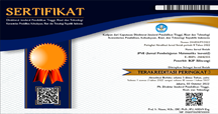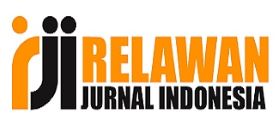Pengembangan Perangkat Pembelajaran Berbasis Masalah yang Mengacu pada Learning Trajectory dan Berorientasi pada Kemampuan Justifikasi Matematis Siswa
DOI:
https://doi.org/10.22460/jpmi.v3i2.p%25pKeywords:
Perangkat Pembelajaran, PBL, Learning Trajectory, Kemampuan Justifikasi MatematisAbstract
The present research and development project aims to develop and describe the quality of learning material consisting of lesson plans and student worksheets to facilitate students mathematical justification skills. The learning material is based on problem-based learning (PBL) approach and learning trajectory on the Cartesian Coordinate System. This project uses the ADDIE model (Analysis, Design, Development, Implementation, Evaluation). The subject of this research is 32 students in VIIIC SMPN 2 Bambang Lipuro. Based on the result of the validation assessment, the lesson plan and student worksheets are very valid. Based on the result of practicality using a student questionnaire, the learning material is practical. Based on the result of practicality using the observation sheet of learning implementation, the learning material is very practical. Based on the effectiveness assessment using the students mathematical justification skill test, 75% of students have minimum mathematical justification skills in the good category. However, based on the z-test, the learning material is not effective because zcount = 0,6172 < zα =1,654. So, the learning material is valid and practice to be implemented, but not yet effective to facilitate student’s justification skills. It was possibly due to obstacles happening during the implementation, like the implementation of PBL needs more time than it planed, and some students did not do the writing task.
Keywords: learning material, PBL, learning trajectory, mathematical justification skills
References
Arends, R. I. (2012). Learning to Teach (Ninth Edit). New York: Mc Graw Hill.
Atsnan, M. F. (2016). Keterlaksanaan Learning Trajectory pada Pembelajaran Matematika. Lentera: Jurnal Ilmiah Kependidikan, 11(1), 57–63.
Back, R. J., Mannila, L., & Wallin, S. (2010). Student Justificatios in High School Mathematics. Proceedings of CERME 6, 291–300. www.inrp.fr/editions/cerme6
Branch, R. M. (2009). Instructional Design: The ADDIE Approach. New York: Springer. https://doi.org/10.1007/978-0-387-09506-6
Brown, A. E. (2016). Critical Thinking to Justify an Answer in Mathematics Classrooms. Walden University.
Cioe, M., King, S., Ostien, D., Pansa, N., & Staples, M. (2015). Moving
Students to “the Why?†Mathematics Teaching in the Middle School, 20(8), 485–491.
Clements, D. H., & Sarama, J. (2009). Learning and Teaching Early Math: The Learning Trajectory Approach (A. H. Schoenfeld (ed.)). Routledge.
Confrey, J., Maloney, A., Shah, M., & Belcher, M. (2019). Future of Education and Skills 2030: Curriculum analysis. A Synthesis of Research on Learning Trajectories/Progressions in Mathematics.
Daro, P., Mosher, F. A., & Corcoran, T. B. (2011). Learning Trajectories in Mathematics : A Foundation for Standards , Curriculum , Assessment , and Instruction Learning Trajectories in Mathematics : A Foundation for Standards ,. (CPRE) Research Report. http://repository.upenn.edu/cpre_researchreports/60
Duskri, M., Maidiyah, E., Risnawati, & Ilham, S. (2017). Penerapan Model Problem Based Learning untuk Meningkatkan Kemampuan Komunikasi Matematis dalam Pemecahan Masalah di Kelas IX SMPN 8 Banda Aceh. Al Khawarizmi: Jurnal Pendidikan Dan Pembelajaran Matematika, 1(1), 75–101.
Firda, J., Setiawani, S., & Murtikusuma, R. P. (2019). Analisis Kemampuan Komunikasi Matematis Siswa Peserta Calistung SMP Negeri 8 Jember. Kadikma, 10(1), 116–125.
Fuadiah, N. F. (2017). Hypothetical Learning Trajectory pada
Pembelajaran Bilangan negatif Berdasarkan teori Situasi Didaktis di Sekolah Menengah. Mosharofa, 6(1), 13–24.
Gardenia, N. (2016). Peningkatan Kemampuan pemahaman dan Komunikasi Matematis Siswa SMK Melalui Pembelajaran Konstruktivisme Model Needham. Jurnal Formatif, 6(2), 110–118.
Hamidy, A., & Suryaningtyas, S. (2016). Kemampuan Justifikasi Matematis Siswa SMP pada materi segitiga. Seminar Nasional Pendidikan Matematika, August, 1–13.
Kemendikbud. (2014). Peraturan Menteri Pedidikan dan Kebudayaan Nomor 103 Tahun 2014 tentang Pembelajaran pada Pendidikan Dasar dan Menengah
Khodijah, S., Suharno, & Triyanto. (2018). Strategy for Increasing The Students’ Interpersonal Communication Skills through Problem-Based Learning. International Journal of Educational Research Review, 3(4), 150–158.
Lambdin, D. V. (2009). Benefits of Teaching through Problem Solving (pp. 77–82). NCTM.
Lesseig, K. (2016). Fostering Teacher Learning of Conjecturing , Generalising and Justifying through Mathematics Studio. 18(1), 100–119.
Mahmudi, A. (2006). Pengembangan Kemampuan Komunikasi Matematika Siswa Melalui Pembelajaran Matematika. 175–182.
Mullis, I. V. S., Martin, M. O., Foy, P., & Arora, A. (2011). TIMSS 2011 International Results in Mathematics.
Mullis, I. V. S., Martin, M. O., Foy, P., & Hooper, M. (2015). TIMSS 2015 International Results in Mathematics.
Mullis, I. V. S., Martin, M. O., Foy, P., Olson, J. F., Preuschoff, C., Erberber,
E., Arora, A., & Galia, J. (2007). TIMSS 2007 International Mathematics. OECD.
NCTM. (2000). Principles and Standards for School Mathemtics. NCTM.
Nieveen, N. (1999). Prototyping to Reach Product Quality. In Design Approaches and Tools in Education and Training (pp. 125–136). Kluwer Academic Publishers. https://doi.org/10.1007/978-94-011-4255-7
OECD. (2019). Mathematics performance (PISA). https://doi.org/10.1787/04711c74-en
Padmavathy, R. D., & Mareesh, K. (2013). Effectiveness of Problem Based Learning In Mathematics. International Multidisciplinary E-Journal, 2(1), 45–51.
Puspitasari, & Ratu, N. (2019). Deskripsi Pemahaman Konsep Siswa dalam Menyelesaikan Soal PISA pada Konten Space and Shape. Mosharafa: Jurnal Pendidikan Matematika, 8(1), 155–166.
Rahmiah, & Mustamin. (2016). Upaya Peningkatan Efektivitas Proses Belajar Sistem Koordinat Cartesius dengan Penggunaan Peta Buatan. Journal of Education and Learning, 6(2), 99–108. http://repository.upenn.edu/cpre_researchreports/60
Rosnawati, R. (2013). Kemampuan Penalaran Matematika Siswa SMP Indonesia pada TIMSS 2011. Prosiding Seminar Nasional Penelitian, Pendidikan Dan Penerapan MIPA, FMIPA UNY, 1–6.
Setiyawati, R. Z. (2018). Role Play Mudahkan Pahami Koordinat Kartesius. Jateng Pos. https://jatengpos.co.id/role-play-mudahkan-pahami-koordinat-kartesius/.
Simon, M. A., & Tzur, R. (2004). Explicating the Role of Mathematical Tasks in Conceptual Learning : An Elaboration of the Hypothetical Learning Trajectory. Mathematical Thinking and Learning, 6(2), 91–104. https://doi.org/10.1207/s15327833mtl0602
Sudjana. (2005). Metoda Statistika. Bandung: Tarsito.
Sumarsih. (2016). Analisis Kesulitan Siswa SMP dalam Mempelajari Persamaan Garis Lurus dan Alternatif Pemecahannya. Seminar Nasional Pendidikan Matematika FKIP UNS, November, 415–430.
Surya, A., & Aman. (2016). Developing Formative Authentic Assessment Instruments Based oon Learning Trajectory for Elementary School. Research and Evaluation in Education, 2(1), 13–24. https://doi.org/http://dx.doi.org/10.21831/reid.v2i1.6540
Vazquez, L. T. (2008). A, E, I, O, U and Always Y: A Simple Technique for Improving Communication and Assessment in the Mathematics Classroom. The Mathematics Teacher, 102(1), 16–23.
Widoyoko. (2009). Evaluasi Program Pembelajaran. Yogyakarta: Pustaka Pelajar.
Yamasari, Y. (2010). Pengembangan Media Pembelajaran Matematika Berbasis ICT yang Berkualitas. 979.
Zendrato, J. (2016). Tingkat Penerapan Rencana Pelaksanaan Pembelajaran dalam Pelaksanaan Pembelajaran di Kelas: Suatu Studi Kasus di SMA Dian Harapan Jawa. Scholaria, 6(2), 58–73.

















